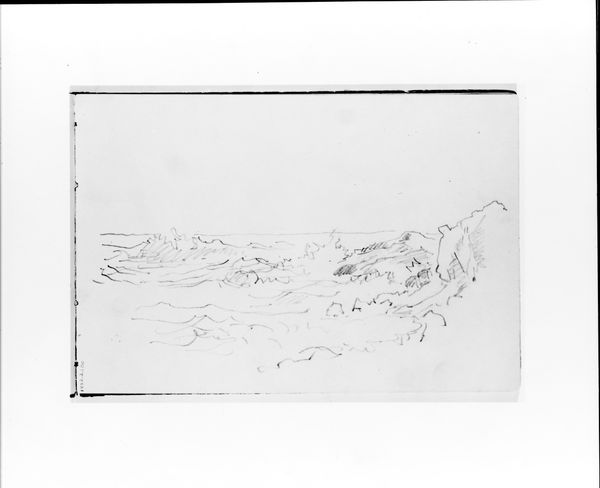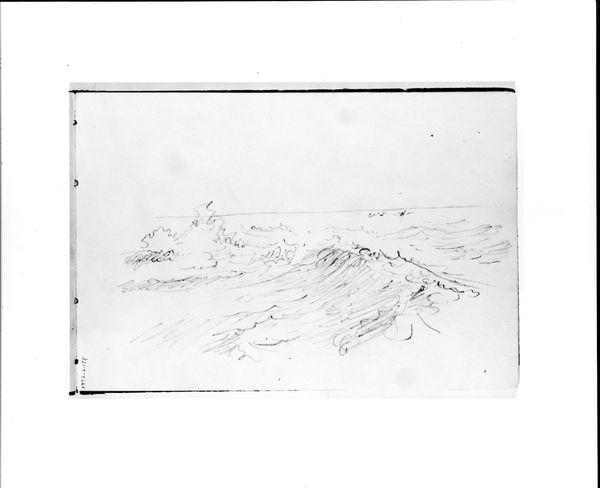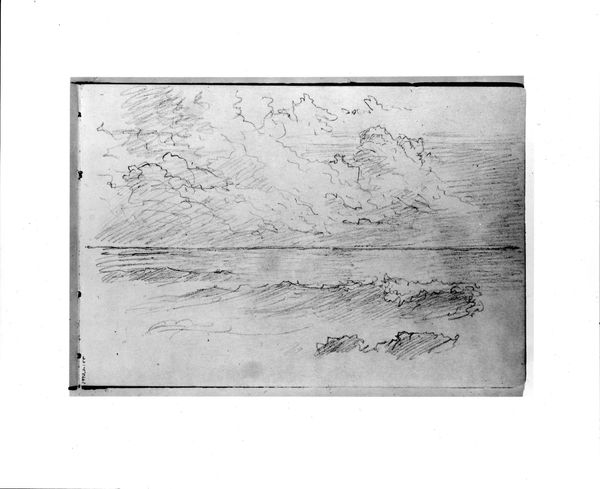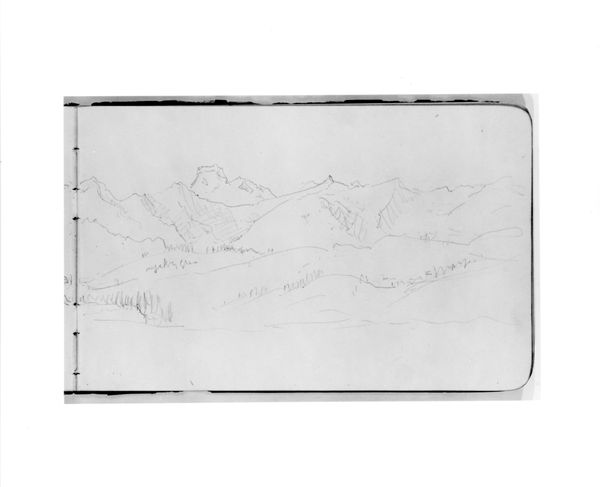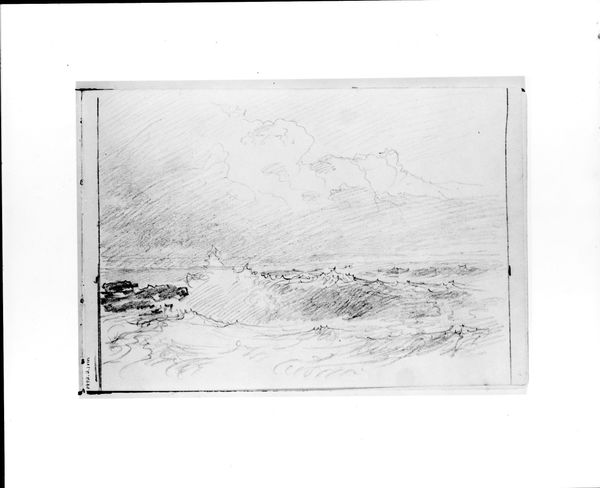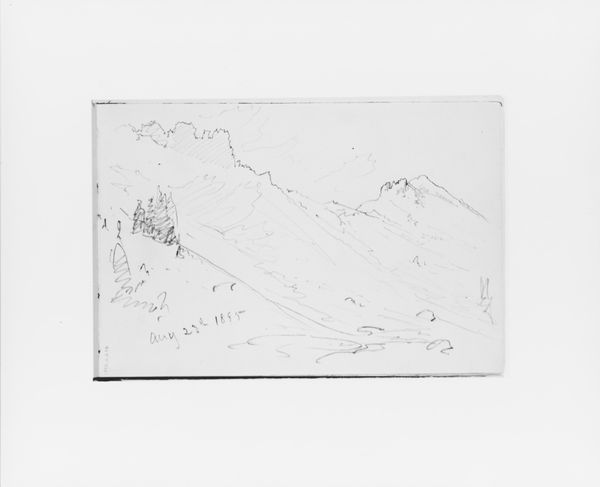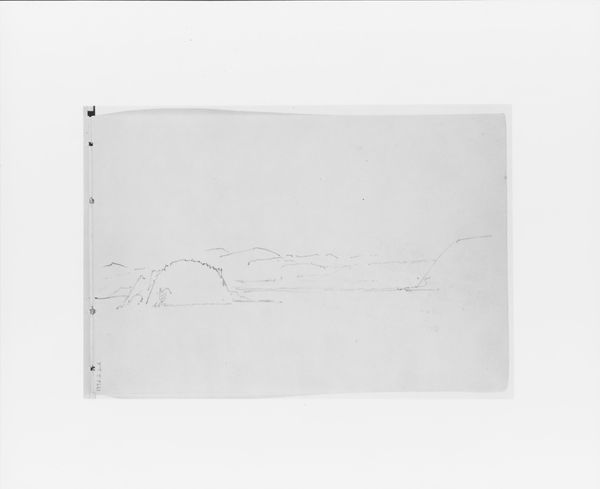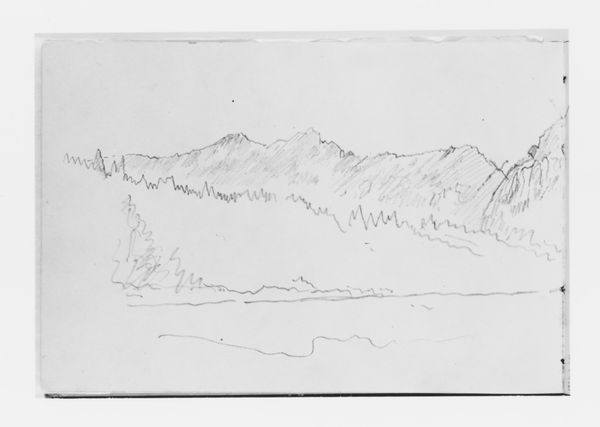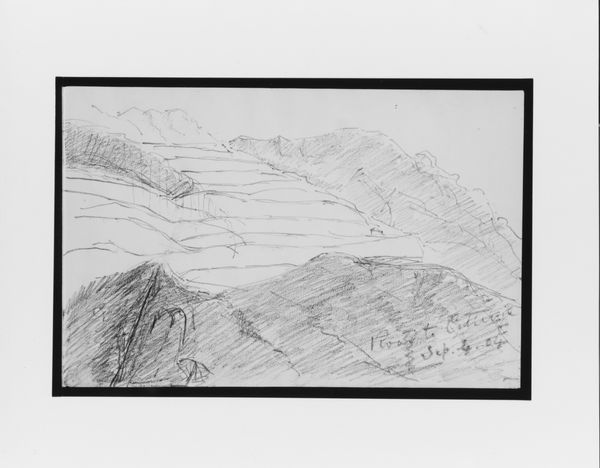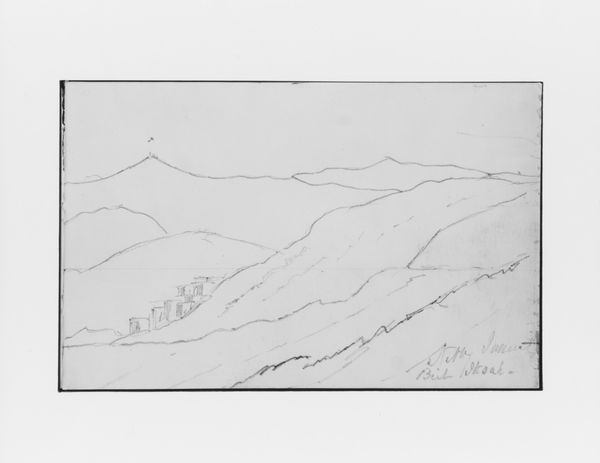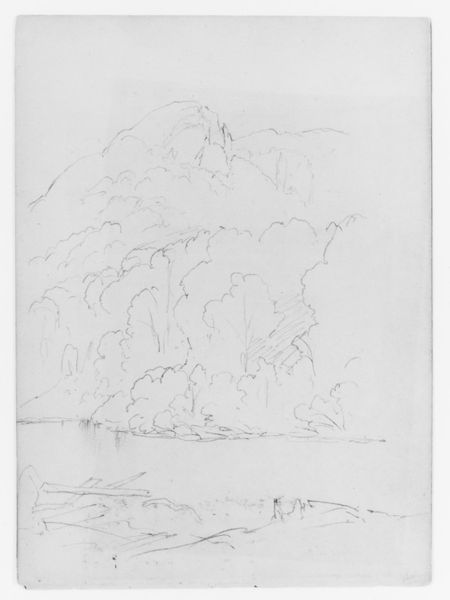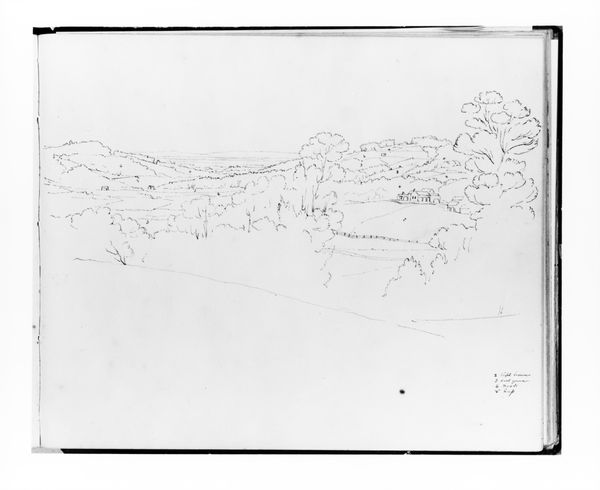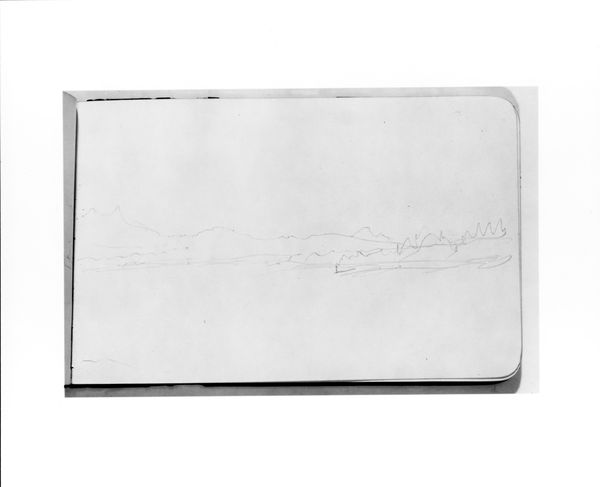
Sketch of Breaking Waves (from Sketchbook VII) 1886
0:00
0:00
drawing, paper, ink
#
drawing
#
ink drawing
#
impressionism
#
landscape
#
paper
#
ink
#
line
#
realism
#
sea
Dimensions: 5 x 7 1/2 in. (12.7 x 19.1 cm)
Copyright: Public Domain
Editor: So this is William Trost Richards' "Sketch of Breaking Waves," done in 1886 using ink on paper. It feels incredibly dynamic, capturing a raw, almost violent energy of the sea. What do you see in this piece, especially as it relates to its time? Curator: I see more than just waves; I see a conversation between the ephemeral and the eternal. Richards, steeped in the Romantic tradition, uses the wave as a potent symbol. Think about the cultural obsession with the sea during the 19th century – its boundlessness representing both freedom and untamed power. Does the image evoke any personal symbols or emotions for you? Editor: It makes me think about the power of nature versus human life; its insignificance when faced with something so immense. Curator: Exactly! The wave, throughout history, has been depicted as both destructive force and a source of renewal. Notice how Richards uses quick, almost frantic lines? It mirrors the fleeting nature of existence, the constant flux of life itself. How do you think that immediacy affects the viewer's understanding? Editor: The quick lines make it feel alive, like you're actually witnessing a moment rather than a static scene. It avoids feeling grand and composed in favour of something realistic, a stolen snapshot of a storm. Curator: Indeed. And this ‘snapshot’ captures more than just a visual moment. It encapsulates the emotional weight carried by the sea across cultures – a place of origin, a border, a pathway to the unknown. The wave embodies the psychological drama of confronting something larger than ourselves, yes? Editor: Definitely. I hadn't thought about all those layers before. Thanks. Curator: My pleasure. Thinking about symbols and how artists engage with collective memory adds so much depth to our experience of art.
Comments
No comments
Be the first to comment and join the conversation on the ultimate creative platform.
